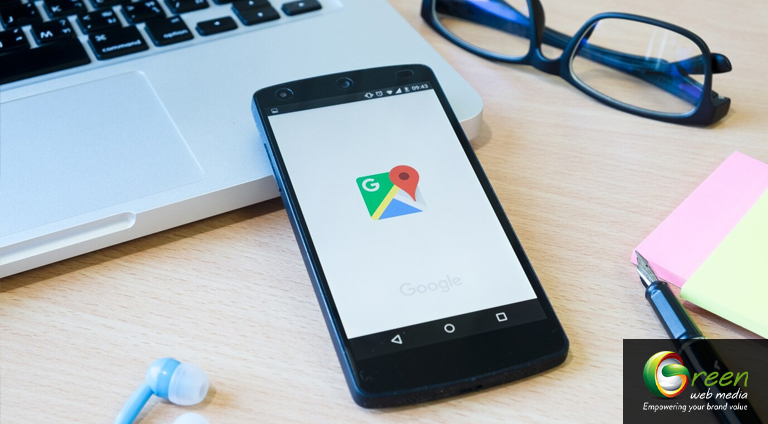8 Steps to Easily Create a Website

You may be looking for a formidable online presence for your product or service. In such a case, the first thing to do is get a home for your brand. To do this, you can create a website. This journey of website creation can be both exhilarating and daunting.
A website can serve multiple purposes
– showcase your portfolio,
– start an online store,
– highlight your products or services, or
– simply share your thoughts with the world
In all such cases, a well-crafted website will be your gateway to the digital space.
This blog will cover the steps to creating a phenomenal digital presence. Right from the initial spark of website purpose to the triumphant moment of going live, we cover it all.
With these eight simple steps, you can navigate the complexities of domain registration, design customization, and SEO optimization with ease.
Steps to create a website the right way

1 – Identify Your Website’s Purpose
Understanding the core purpose of your website is the cornerstone of its creation. The objective is the guiding star that shapes every aspect, from design to content. To gain clarity on this, ask yourself the fundamental question: What do I want to achieve with my website? Are you looking to inform, entertain, sell, or connect? Some examples include the following –
– You are a creative person looking to showcase your work or
– You are an aspiring business owner looking to win customers online or
– You have a strong belief in a cause and want to inform people about it or
– You are trying to create a virtual hub for your community.
Reflect on your target audience and the unique value you can offer them. Consider the problems you’re solving or the experiences you’re providing. Your website’s purpose should resonate with your visitors. It should compel them to return.
Once you’ve pinpointed your website’s raison d’être, let it inform every decision you make hereafter. It will influence a lot of aspects of website creation
– your design choices,
– the features you implement, and
– the content you produce.
With a clear purpose, your website will not just be a space on the internet. Rather, it will be a destination for those you aim to serve.
2 – Choose a Domain Name & Register it
Selecting the perfect domain name is vital to present a clear differential and brand value proposition. It’s the address where people will find you online. So, the address should be easy to remember and reflect what your website is all about.
Choose a name that is both memorable and brief. It would be helpful if it offered a sneak peek as to what guests may anticipate. Stay away from highly numeric terms or complex phrases, as they might be difficult to remember. Once you’ve settled on a name, find out whether it’s available. This may be done on several websites. Some examples include GoDaddy and Hostinger. They have a free search tool that will tell you if someone else already has that name.
If your chosen name is available, great! You can register it through a domain registrar like GoDaddy or Hostinger. This usually involves a small fee, and you’ll need to renew it every year to keep it.
Remember, your domain name is your website’s first impression. So, take your time to pick a name that’s just right for you and your visitors. It’s the first step in making your mark on the internet!

3 – Sign Up for Hosting or a Website Builder
Selecting a web hosting service is a critical step in launching your website. It is essential to choose a hosting provider that offers robust performance. It should provide excellent uptime and scalable solutions to accommodate your website’s growth.
In parallel, a website builder is an invaluable tool for those seeking a streamlined, code-free approach to website creation. It offers a suite of intuitive design options and pre-configured elements that enable rapid deployment of professional-looking websites.
To initiate this process, conduct thorough research to identify a hosting service or website builder that aligns with your technical requirements and budget constraints. Opt for a plan that balances functionality with affordability. Doing so ensures that you receive the necessary resources without incurring unnecessary expenses. WordPress is a good choice here.
Upon registration, you will be presented with a selection of templates—consider these as foundational designs from which to craft your unique digital presence. Customize your chosen template with original content. With this, you can integrate text, imagery, and multimedia to reflect your brand’s identity.
The website builder is truly the digital foundation you select for your website. It should resonate with your brand values. It needs to also offer a welcoming and engaging experience for your visitors. Choose judiciously to ensure long-term success and stability for your online venture.

4 – Customize Your Website with a Template or Theme and plugins
Customizing your website is a pivotal phase where aesthetics meet functionality. You can begin by selecting a template or theme that mirrors the professional image you wish to project. This template serves as the canvas for your website. It dictates the layout and color scheme that visitors will first encounter.
When choosing a template, prioritize simplicity and readability. Doing so makes certain that it is responsive. A clean design appeals a lot visually. At the same time, it also facilitates seamless navigation, thus enhancing user experience.
Next, you need to incorporate plugins to extend the functionality of your website. Plugins are tools that add specific features. With its help, you don’t need to code the functionality from scratch. Some good examples of plugins include contact forms, SEO tools, and social media integration.
It’s essential to select plugins that are reputable and regularly updated to maintain security and compatibility. You need to limit the number of plugins to avoid unnecessary bloat and potential conflicts that can slow down your site.
5 – Add Ecommerce to Your Website
Integrating e-commerce capabilities into your website is a transformative step. Doing this can convert your digital space into a dynamic marketplace where you can sell products. This process involves implementing a secure and user-friendly shopping platform. In this space, customers can browse products, make selections, and complete purchases with ease.
The first step in completing the integration is to pick an e-commerce platform that complements the design and business plan of your website. BigCommerce, WooCommerce, and Shopify are a few excellent options.
Features like product management and safe payment methods are crucial. These elements give your customers a great time shopping online.
Make sure the e-commerce platform you select is scalable so it can expand with your company. It should also provide customization choices that match the style of your company. In this manner, you may implement a consistent user experience across all of your website’s pages.
Next, you need to add clear, concise product descriptions and high-quality images to showcase your offerings. Make certain that the navigation is intuitive. This will allow customers to easily find and purchase products. It’s also a good idea to figure out if your e-commerce platform is mobile-friendly. This is crucial since a large percentage of today’s internet buying takes place on smartphones and tablets.
6 – Optimize Your Site for Organic Search
Search engine optimization helps get better organic site traffic. In this, you would modify your website to make it easier for search engines to understand and give it a higher ranking in search results.
The first step here is to thoroughly analyze key terms that are relevant to your content and that your intended customer is probably going to find in a Google search. Use these terms naturally in the headers, body copy, and titles of your web pages.
However, make sure not to overuse them. Keyword stuffing can lead to Google penalties.
Next, check that your website’s structure is clear and logical. It should have a sitemap that search engines can crawl efficiently. The site needs to have a well-organized hierarchy of pages. Another good idea here is to use descriptive URLs that reflect the content of each page.
Content is king in SEO. So, you need to regularly update your website with unique and quality content that provides value to your visitors. This will help improve your search rankings.
Lastly, tweak your website’s load speed and mobile responsiveness. If done right, these factors will be used by search engines when ranking websites.
Doing these steps will lead to increased organic site traffic and better engagement with your content.
7 – Do Quality Checks and Launch Your Website
QC and debugging are the final, critical steps before your website greets the world. This stage is all about polishing and ensuring everything works flawlessly. These steps will help:
– A thorough review of content for accuracy, grammar, and clarity.
– All links should lead where they should
– Images and other multimedia should load correctly
– The layout should appear as intended across different browsers and devices.
Debugging is the technical sweep of your site, hunting for any coding errors or broken functionalities. Use tools that simulate user interactions to test features like forms, shopping carts, and login processes. Address any issues that arise promptly. Doing so will drive a smooth user experience.
Once QC and debugging are complete, it’s time to launch. Choose a low-traffic period for your debut. Such a decision will allow you to monitor the site’s performance and make immediate adjustments if needed. Once this is done, let others know about your digital presence via social media and email newsletters. Doing this will help attract the audience to your new site.
Remember, a successful launch is not the end but the beginning of your website’s journey. Regular updates and ongoing optimization are vital to maintaining a robust online presence.
8 – Manage and Maintain Your Website
Your website’s round-the-clock uptime is an ongoing commitment. It helps your site to remain secure and functional. This process involves regularly updating content and monitoring performance. It also comprises addressing any security vulnerabilities that may arise.
Begin by establishing a routine maintenance schedule. Check for modifications to the themes, plugins, and platform of your website on a regular basis, and install them right away. These upgrades often include new features and security improvements that can boost the functionality of your website.
Content is dynamic, and your website should reflect that. Keep your audience engaged by adding new blog posts or product listings. You should strive to refresh existing content to keep it relevant and accurate. This step will contribute positively to your SEO efforts.
Monitoring your website’s performance is crucial. Use analytics tools to track visitor behavior and page loading times. They will depict the state of the overall user experience. This data will help you make informed decisions about design changes or content updates needed to the site.
Lastly, ensure that you have a reliable backup system in place. Regular backups protect your website from data loss due to technical glitches or security breaches.
These steps allow you to uphold the site’s professionalism and reliability. It also provides a consistent and secure experience for your visitors.
Conclusion
The present online space is overcrowded. You need a strong digital presence to make a mark and pull in the customers. To drive this goal, you need to have a robust and high-performance website. This post took a look at simple steps in your site-building journey.
As you stand at the threshold of this journey, remember that your website is more than just a collection of pages and posts; it’s a living, evolving entity that reflects your passion and commitment. So, stay curious, stay vigilant. Above all, stay passionate about providing an exceptional experience for every visitor who crosses the digital doorstep of your website.





